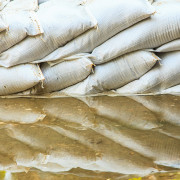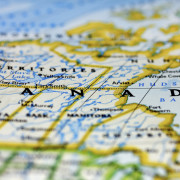The Importance of Managing Earthquake Risk
Do your risk management processes consider the risk of Earthquake?
October 16th marked the 7th annual ShakeOut where over 24 million participants worldwide will practice how to drop, cover and hold on at 10:16 a.m. during Great ShakeOut Earthquake Drills.
“ShakeOut BC Day” started in 2011 and this year over 660,000 participants in British Columbia will participate in drills. The Charlevoix region in Quebec started participating in 2013 and the entire province has joined in for 2014 with over 80,000 participants registered.
Canadian Regions at Risk for Earthquake
Most people would initially think that British Columbia is most at risk when thinking about the risk of earthquakes in Canada. However, parts of Quebec and Eastern Ontario are also at risk for earthquakes. At a recent earthquake response seminar held in Toronto by the Catastrophe Response Unit (CRU), Dr. Kristy Tiampo, professor of geophysical modeling methods at Western University’s department of earth sciences in London, Ont. who also works with the Institute for Catastrophic Loss Reduction (ICLR) stated that “Montreal and Ottawa are both at significant risk of ground shaking” and noted that both cities have seen earthquakes that have measured around 6 on the Richter scale.
In an October 2013 report commissioned by the Insurance Bureau of Canada titled “Study of Impact and the Insurance and Economic Cost of a Major Earthquake in British Columbia and Ontario/Québec” two hypothetical earthquakes were modeled by AIR Worldwide. One off the west coast of British Columbia measuring 9.0 on the Richter scale and one northeast of Quebec City measuring 7.1. These two hypothetical scenarios would result in a combined estimated total insured losses of over $30 billion.
It is imperative for insurance companies to have a complete and accurate picture of the location of the property that they are insuring in context to the risks that surround that property. This will allow them to rate the policy correctly and also to determine whether or not they want to assume the risk. Understanding where the property is in relation to an earthquake zone is very important. But not only is it important to know if the property itself is at risk, but also knowing where that property is in relation to other items that could be impacted by an earthquake. For example, what if the property was close to a natural gas pipeline or propane processing facility? Knowing about these potential risks in isolation is important to the underwriting and rating decision. But, what about when you also factor in earthquake? An earthquake of a small magnitude may not be enough to cause much damage the property. But what if it was enough to cause a gas leak, that then lead to a fire and an explosion? Having this level of information could mean a big difference.
Disaster Risk Management for Insurance Companies
Another factor to consider for insurance companies is the accumulation of risk. While the risk for the single property may be acceptable, knowing where all your existing policyholders are at the time you underwrite a mortgage and their relation to risks such as earthquake zones will be critical in determining whether you are willing to assume this additional risk or if your exposure is too high. If there are two major events in a given year, would your exposure be too high and you wouldn’t be able to pay out on all the claims?
In Canada, various forms of location such as postal code boundaries, municipalities and Catastrophe Risk Evaluating and Standardizing Target Accumulations (CRESTA) zones (for earthquakes) are used to determine the accumulation of risk.
As per the ICLR, Canadian reinsurers, insurers and regulators use Catastrophe Risk Evaluating and Standardizing Target Accumulations (CRESTA) zones as the minimum standard for the capture of data and first level of calculation of probable maximum loss (PML). PML evaluations can influence underwriting decisions, and the amount of reinsurance allowed on a risk can be predicated on the PML valuation.
The original CRESTA zones were established in 1981 and introduced in Canada in 1986. They have been recently re-worked globally and have been re-launched to the market for 2012/2013.
All businesses can use this information to help define their contingency plans in event of an earthquake. Which of my existing store or branch locations might be impacted? Where are my employees situated? How would I deploy resources to help my customers most efficiently? Where would I situate them?Insurance underwriting and exposure analysis is only one area where this information can be used. Other examples include:
- Public Safety departments within governments can use this to build contingency plans for their citizens, determine where they would locate remote relief sites, sites for temporary housing or medical facilities.
- Telecommunication companies could use this to gain a better understanding of the risks associated with building out infrastructure in various parts of the country
Click here to see how DMTI’s disaster risk management tools help insurance companies effectively plan for every possibility.











